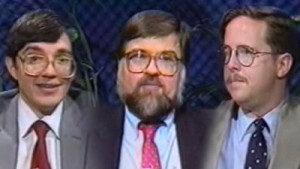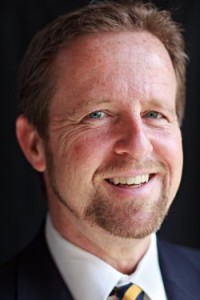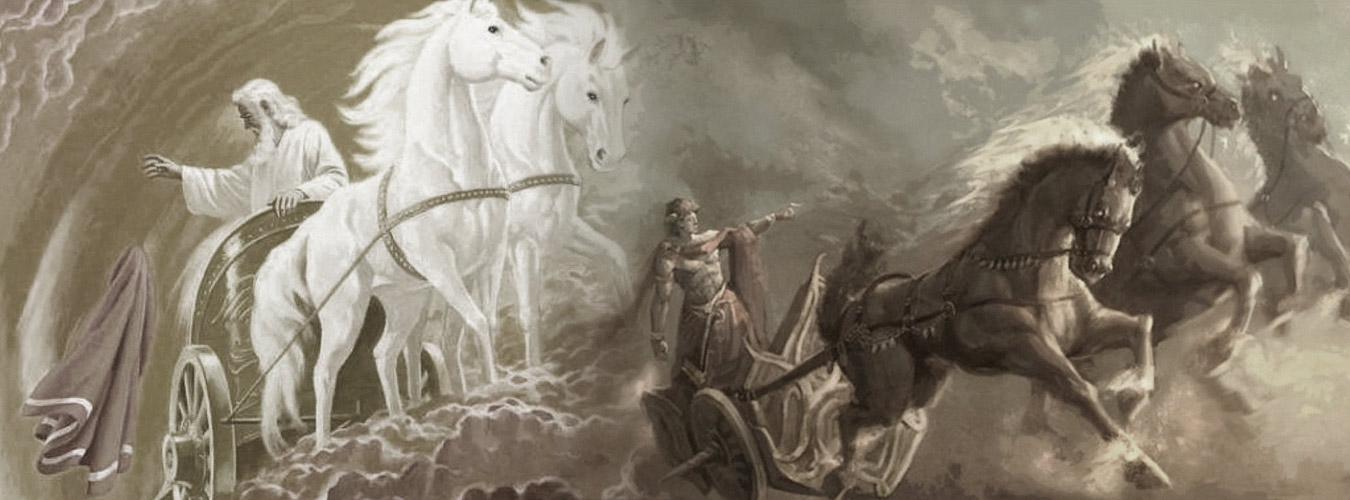In a series of five videos recorded in 1991 from Austin’s public access television program “Christian Answers”, Dr. Michael Horton discussed the Word of Faith Movement with hosts Larry Wessels and Jackson Boyett. Now, while I’ve seen some nice apologetics work done by this program in other videos, knowing the Word of Faith world to the extent that I do I was able to spot a number of things Dr. Horton (although he wasn’t a doctor at the time) and the hosts stated that were simply wrong.

Before I go any further let me say that I contacted Dr. Horton and asked him if he stands by what he said in these videos. After all, they were taped nearly a quarter of a century ago and he could have changed his views during that time, so I wanted to be fair. A few hours later he responded:
“… yes, I do as far as I can now recall …”
If he offers any further thoughts I will issue updates with this post.
Video #1
Horton claims that Kenneth Hagin, Kenneth Copeland, Paul Crouch, and Jimmy Swaggart all deny the doctrine of the Trinity, but the only thing he provided to support that claim was a quote from Jimmy Swaggart about his views. First of all, the video is supposed to be about Word of Faith teachers, and Jimmy Swaggart isn’t Word of Faith and hasn’t been since at least 1982 if he ever was. (He wrote an article against the Word of Faith in 1982 called “Hyper-Faith: A New Gnosticism?” for his ministry’s magazine The Evangelist.) While I’m not up to speed on Swaggart’s views I know for a fact that Kenneth Hagin had an orthodox view on the Trinity. Here’s what it says on the Rhema (Kenneth Hagin Ministries) website.
THE GODHEAD—Our God is One, but manifested in three Persons—the Father, the Son, and the Holy Spirit, being coequal (Deut. 6:4; Phil. 2:6). God the Father is greater than all; the Sender of the Word (Logos) and the Begetter (John 14:28; John 16:28; John 1:14). The Son is the Word flesh-covered, the One Begotten, and has existed with the Father from the beginning (John 1:1; John 1:18; John 1:14). The Holy Spirit proceeds forth from both the Father and the Son and is eternal (John 14:16; John 15:26).
Having claimed that, he then says that WoF people believe that Jesus didn’t work miracles because He was God, but because He was a man anointed by the Holy Spirit which empowered Him to perform miracles. To this charge I will plead guilty, but this isn’t a denial of Jesus’ divinity. It’s simply a Pentecostal view on the hypostatic union, and how that affected Jesus’ ministry.
When all the people were baptized, it came to pass that Jesus also was baptized; and while He prayed, the heaven was opened. And the Holy Spirit descended in bodily form like a dove upon Him, and a voice came from heaven which said, “You are My beloved Son; in You I am well pleased.” (Luke 3:21,22)
The Holy Spirit descended upon Jesus, and then in Luke 4:1,2 we read
“Then Jesus, being filled with the Holy Spirit, returned from the Jordan and was led by the Spirit into the wilderness, being tempted for forty days by the devil.” Then in Luke 4:14 we read “Then Jesus returned in the power of the Spirit to Galilee, and news of Him went out through all the surrounding region.”
Then in verses 16-20 we read:
16So He came to Nazareth, where He had been brought up. And as His custom was, He went into the synagogue on the Sabbath day, and stood up to read. 17 And He was handed the book of the prophet Isaiah. And when He had opened the book, He found the place where it was written:
“The Spirit of the Lord is upon Me, Because He has anointed Me To preach the gospel to the poor; He has sent Me to heal the brokenhearted, To proclaim liberty to the captives And recovery of sight to the blind, To set at liberty those who are oppressed; 19 To proclaim the acceptable year of the Lord.” 20 Then He closed the book, and gave it back to the attendant and sat down. And the eyes of all who were in the synagogue were fixed on Him. 21 And He began to say to them, “Today this Scripture is fulfilled in your hearing.”
From these verses we see that Jesus had the Holy Spirit descend on Him, then He returned from the Jordan where He was baptized “filled with the Spirit”, then He returned in the power of the Spirit to Galilee, and then He read a passage in Isaiah about being anointed by the Spirit and proclaimed that it was now fulfilled in Him.
Shortly after that Jesus performed His first miracle at the wedding at Cana. Now consider this for a minute. If Jesus worked miracles because He was God, why did He wait until he was thirty years old to perform His first miracle? After all, He was just as much God the first thirty years as He was the next three years. Why did He wait until the Holy Spirit descended on Him and He was filled with the Spirit? Was that just a coincidence, or is it possible that Jesus in His humanity was dependent upon the Spirit for His supernatural ministry?
We all agree that Jesus had to be fully God and fully man in order to redeem fallen mankind. If He hadn’t been human He couldn’t have taken our place, and if He hadn’t been divine He couldn’t have lived a sinless life and provided an adequate sacrifice. Well, if He was fully human as a sacrifice wouldn’t it stand to reason that He was also fully human as a prophet and teacher? Wouldn’t it stand to reason that He needed the power of the Holy Spirit to work miracles just as He needed to sleep, eat, and drink in order to function? This would be perfectly consistent with the self-emptying (kenosis) of Christ mentioned in Philippians 2:7 where we see that Jesus said aside some of His divine attributes in order to identify with man in His humility.
Reformed ministers and cessationists might not care for this view, but that doesn’t make it heresy. It’s well supported by scripture and it doesn’t violate the doctrines of the Trinity or the deity of Christ, as much as they might insist that it does.
After that, he presents a “Jesus Died Spiritually” teaching that all of the Word of Faith teachers supposedly promote, including a net to hold Jesus in the bowels of hell. Here he mistakenly lumps all WoF teachers together with one collective view, whereas the actual views vary from the extreme view that he presents as the norm to a more orthodox view like the one I hold to. As I’ve stated in other videos and blog posts, this is a nonessential issue. It’s not like the deity of Christ or justification by faith where you definitely need to have the correct understanding. Theologians throughout church history have had different beliefs on what happened between the crucifixion and the resurrection, and how that brought about redemption, and there has never been any one view on the subject that was considered the only acceptable view. Nobody’s going to hell because they have a different theory on how the atonement process played out.
Horton then claims that E. W. Kenyon was a member of a Theosophical (the 19th century precursor of New Age) church. He bases his statement on the flawed analysis in Dan McConnell’s anti-WoF book entitled “A Different Gospel”. In fact, Kenyon was opposed to Theosophy and was an ordained Free Will Baptist pastor. This is documented in Joe McIntyre’s book “E. W. Kenyon and His Message of Faith: The True Story”. (McIntyre is the president of the Kenyon Gospel Publishing Society, and has access to Kenyon’s biographical material and everything he ever wrote.)
In “The Father and His Family” Kenyon stated his opposition to Theosophy and the metaphysical cults.
Every false religion that denies the Incarnation of Jesus of Nazareth has attempted to provide a theory of universal Incarnation in order to stimulate to a higher moral and spiritual life. Theosophy tries to make us believe that all men have the nature of Deity. The same thing is held by practically all our modern liberal theological teachers and preachers! That the so-called “Spark of Divinity” dwells in all men, that the New Birth is simply the awakening, the blowing-into-a-flame, of this spark of Divinity. If man had a spark of Deity or any part of Deity abiding in him, then man was already God Incarnate. We know that this theory is fallacious, for humanity has experimentally proven it false. The entire New Testament contradicts it.
McConnell overlooked this in his book and Horton duplicated his lack of due diligence in his comments here.
Horton then states that the first century heretic Cerinthus believed everything that WoF teachers believe. Well, let’s take a look at what Cerinthus believed, shall we?
- The visible world wasn’t created by the Supreme Being, but by a lesser god known as a demiurge. (Nothing like that taught in the WoF.)
- Denied the virgin birth of Jesus, and thus the deity of Christ. (WoF teachers believe in both the virgin birth and the deity of Christ.)
- Jesus wasn’t the Christ, but the Christ descended on Him at his baptism and departed at His crucifixion. (As I mentioned earlier, the WoF teaches that Jesus was the Christ or the anointed one but He didn’t receive that anointing until the Holy Spirit descended upon Him at His baptism.)
- Cerinthus taught that strict observance of the Law of Moses led to salvation. (WoF teaches that we are justified by faith, not works.)
The only similarity is in the third point regarding the anointing. What Dr. Horton is trying to do here is employ a guilt-by-association tactic by taking something that WoF people believe and juxtaposing it next to what a heretic believed, asserting that they’re similar enough to brand WoF teaching heresy. Lame!
The good doctor then repeats Dan McConnell’s allegations of plagiarism against Kenneth Hagin. As I’ve mentioned on my blog post entitled “The Kenyon Connection (part 1)”, most of the examples that McConnell cited were taken from a free monthly publication produced by Kenneth Hagin Ministries called “The Word of Faith”, where excerpts of Brother Hagin’s messages were published. Apparently the editor didn’t recognize the fact that Brother Hagin was quoting Kenyon and no acknowledgment was provided, as was also the case in a few of Brother Hagin’s books that were also taken from transcripts. (He didn’t actually sit down and write very many books.)
However, if he had been trying to steal Kenyon’s words he certainly wouldn’t have gone to the trouble of acknowledging Kenyon at length in his 1979 book “The Name of Jesus”. Nor would he have mentioned Kenyon from the pulpit frequently as he did for many years before McConnell’s book was published. Nor would he have issued a book by Kenyon (The Blood Covenant) to his students and required them to read it as was the case when I started at Rhema in 1982. When I lived in Tulsa from 1982-1985 Kenyon’s books were everywhere, primarily because Kenneth Hagin made them popular by talking about Kenyon. You don’t do that if you’re out to “rip him off” as Larry Wessells stated. If you’re going to steal somebody’s words and thoughts you’re going to do it as discreetly as possible. It was an unfortunate oversight, and nothing more. Kenneth Hagin wasn’t perfect, but apparently he lived a life sufficiently above reproach that this is all his critics could come up with.
As Joe McIntyre pointed out on the Kenyon website, Kenneth Hagin had a good working relationship with the Kenyon family and organization. Had Kenyon lived at the time of Kenneth Hagin’s greatest influence they would certainly have been good friends. When I asked McIntyre if there was ever any plagiarism lawsuit filed by Kenyon’s family against Brother Hagin (as Horton claimed later in the first video) or anybody else, he told me that there was none that he was aware of. He even mentioned another minister who wrote a book where half of it was taken from Kenyon and said that they didn’t even sue him, and if anybody ripped Kenyon off he did. But that just wasn’t their style. McIntyre also noted that preachers quote other preachers all the time, and it’s understood among ministers that verbal footnoting is cumbersome. However, it has become an issue since the advent of the internet because it’s so much easier now to discover the borrowing of sermons, ideas, illustrations, or other verbiage. What some of these critics are trying to do is hold ministers who borrowed from others in the past to the same standards as are seen in the world of academia and those employed in the publishing in the digital age, and completely disregarding the standards of the day and the settings in which the ministers wrote.
After this Horton says that Kenneth Hagin doesn’t believe that Jesus is a physical person, and holds to the Gnostic view that Jesus was an apparition. He bases this on Brother Hagin’s account of a vision he had of Jesus walking into his hospital room and sitting next to him for nearly an hour and a half while He taught him certain things about the ministry of the prophet. However, Brother Hagin wasn’t saying that Jesus was merely an apparition. He certainly believes that Jesus was and still is fully God and fully man. (The theological term for this is the hypostatic union.) In fact, we were taught this at his school Rhema Bible Training Center. No, Brother Hagin was simply saying that when he heard somebody walking into his room he wasn’t aware that he was having a vision, because he wasn’t in a trance and wasn’t in prayer. He was just lying there in his hospital bed as he recovered from an arm injury. To read anything more into his words is a complete misrepresentation, which unfortunately is quite common with WoF critics.
Here’s what Kenneth Hagin said in his book “How To Be Led By The Spirit Of God”.
Let me go back—I said I would in the preface of this book—to what Jesus said to me in February 1959 in El Paso, Texas. It was 6:30 in the evening. I was sitting up in bed studying. My eyes were wide open. (There are three types of visions. The highest type is an open vision. In an open vision, one’s physical senses are not suspended, and his physical eyes are not closed. He possesses all of his physical capabilities, yet sees into the realm of the spirit.)
I heard footsteps. The door to my room was ajar twelve to fourteen inches, so I looked to see who was coming into my room. I expected to see some literal, physical person. But as I looked to see who it was, I saw Jesus.
In the preface that he referred to, he wrote:
In February 1959 in El Paso, Texas, the Lord appeared to me in a vision. He came into my room at 6:30 in the evening, sat down in a chair by my bedside, and talked with me for an hour and a half. I tell more about this in the book, but I want to emphasize something here first.
Kenneth Hagin talked about the same vision in his book “I Believe in Visions”, where he elaborated on three different types of visions. This type of vision is called an open vision, as opposed to a spiritual vision or a trance as he also discussed. In an open vision you see things as though they were actually physically occurring, but it’s still a vision. That’s why he used the words “literal” and “physical”, because in that type of vision that’s how they appear. Had he said that Jesus literally, physically came into his hospital room then these same guys would likely have accused him of heresy on the basis of the fact that the Bible says He’s seated at the right hand of the Father. You can’t win with heretic hunters.
Video #2
Horton says that Kenneth Hagin said that believers are as much The Incarnation as Jesus. Well, here’s the actual quote from Brother Hagin.
“The believer is as much an incarnation of God as Jesus Christ.”
Notice that he said “an incarnation” rather than “The Incarnation”. That’s a very important point. As I’ve pointed out in other videos and on my blog, Kenneth Hagin was quoting from Kenyon when he said that, so let’s look at what Kenyon said.
If Jesus was Incarnate, Man and God can become united; God can dwell in these human bodies of ours; God can impart His own life and nature to our spirits, and we may have God’s life in these human bodies. If Jesus was Incarnate, then immortality is a fact. If we do receive Eternal Life for our spirits, then we have positive assurance that these bodies will become Immortal at the return of the Lord Jesus. If the Incarnation is a fact, Christianity is supernatural. Every man who has been “born again” is an Incarnation, and Christianity is a miracle. The believer is as much an Incarnation as was Jesus of Nazareth. We cannot conceive of any man’s desiring to doubt the Incarnation, as it offers the only solution of life’s mystery; it gives the reason for man’s being; it makes life with its burdens, sorrows, and grief which culminate in death tolerable; it throws light upon this human problem that can come from no other source.
Kenyon wasn’t teaching the deification of believers. He was saying that The Incarnation proves that God can live in human bodies (that’s what “incarnation” means – “in the flesh”), and no other religion has been able to prove similar claims. Because of Jesus’ incarnation, God can impart His life and nature into our spirits and take up residence in our bodies through the Holy Spirit. (God became a man through “The Incarnation” but God comes to live in the believer through “an incarnation” of the Holy Spirit.) The emphasis was on the supernatural nature of being born again, and that the indwelling of the Holy Spirit is just as miraculous as The Incarnation of Jesus.
(The word “incarnation” was often used as a reference to the indwelling of the Holy Spirit in Kenyon’s Day. Grace and Glory by A. J. Gordon – 1880; The Llife of A. B. Simpson by A. E. Thompson – 1920; The Acts of the Holy Spirit by A. T. Pierson 1896.)
By quoting Kenyon, Kenneth Hagin was making the same point. He was not teaching anything unorthodox. He was simply stating orthodox Christian theology in an “unorthodox” (or unconventional) way. Later in the video Horton again shows us how confused he is by attributing this same quote to Kenneth Copeland rather than Kenneth Hagin.
In a similar fashion Horton misrepresents what Brother Hagin said in quoting him from his book “Zoe: The God-Kind of Life”, stating that Brother Hagin said he was a god-man.
In the new birth, we are brought into vital union with Jesus Christ. All that most people think that they have in the new birth is forgiveness of sins. They don’t know about being in union with God.
Even many in the great body of Full Gospel people do not know that the new birth is a real incarnation. They do not know they are as much sons and daughters of God as Jesus. They only have a hazy concept of what God was done, of what He is to them, and of what they are to God.
Jesus was first divine, and then He was human. So He was in the flesh a divine human being. I was first human, and so were you, but I was born of God and so I became a human-divine being!
God is living in us!
 Horton omits the last sentence where Brother Hagin said “God is living in us”, presumably because that might have provided an indication as to the orthodox nature of what Brother Hagin was saying. Also, notice that Kenneth Hagin didn’t say he’s a “god-man” (only Jesus could be considered a God-man, being fully human and fully divine) as Horton claims. He said that God is living in us, and that makes us human-divine beings. That was his way of saying that we’re children of God through the new birth, and we are partakers of the divine nature. (II Pet. 1:4)
Horton omits the last sentence where Brother Hagin said “God is living in us”, presumably because that might have provided an indication as to the orthodox nature of what Brother Hagin was saying. Also, notice that Kenneth Hagin didn’t say he’s a “god-man” (only Jesus could be considered a God-man, being fully human and fully divine) as Horton claims. He said that God is living in us, and that makes us human-divine beings. That was his way of saying that we’re children of God through the new birth, and we are partakers of the divine nature. (II Pet. 1:4)
Wessels and Horton then claim that Kenneth Hagin stated that people would die if they didn’t accept his teachings on positive confession. That is clearly not what Brother Hagin said. He was talking about his prophetic ministry. He said that if the Lord gave him a message for an individual, a church, or a pastor and they don’t receive it they may face judgment. He didn’t say anything about his teachings. If people don’t believe his teaching then they don’t believe. That’s they’re choice. He never said that people will die because they don’t agree with his theology. They even read where he said that for all of their viewers and they still misrepresented it.
In his book “I Believe In Visions” Kenneth Hagin said the following:
“The Lord said to me, ‘If I give you a message for an individual, a church, or a pastor and they don’t accept it, you will not be responsible. They will be responsible. There will be ministers who don’t accept it and will fall dead in the pulpit.”
The context of this discussion was the ministry of the prophet. Brother Hagin was in the hospital recovering from an injury to his arm that resulted from a fall. The Lord appeared to him and explained why this accident occurred. It was allowed to arrest his attention to the fact that he was only in the permissive will of God, because he was putting his teaching ministry ahead of his prophetic ministry. Jesus then talked to him at length about the ministry of the prophet, and what was expected of him in his prophetic ministry. That’s when He mentioned ministers falling dead in the pulpit. This had nothing to do with Kenneth Hagin’s teaching ministry. It was about specific messages for specific people that Kenneth Hagin as a prophet was expected to deliver, which he had been reluctant to do. That’s why he was in the hospital.


